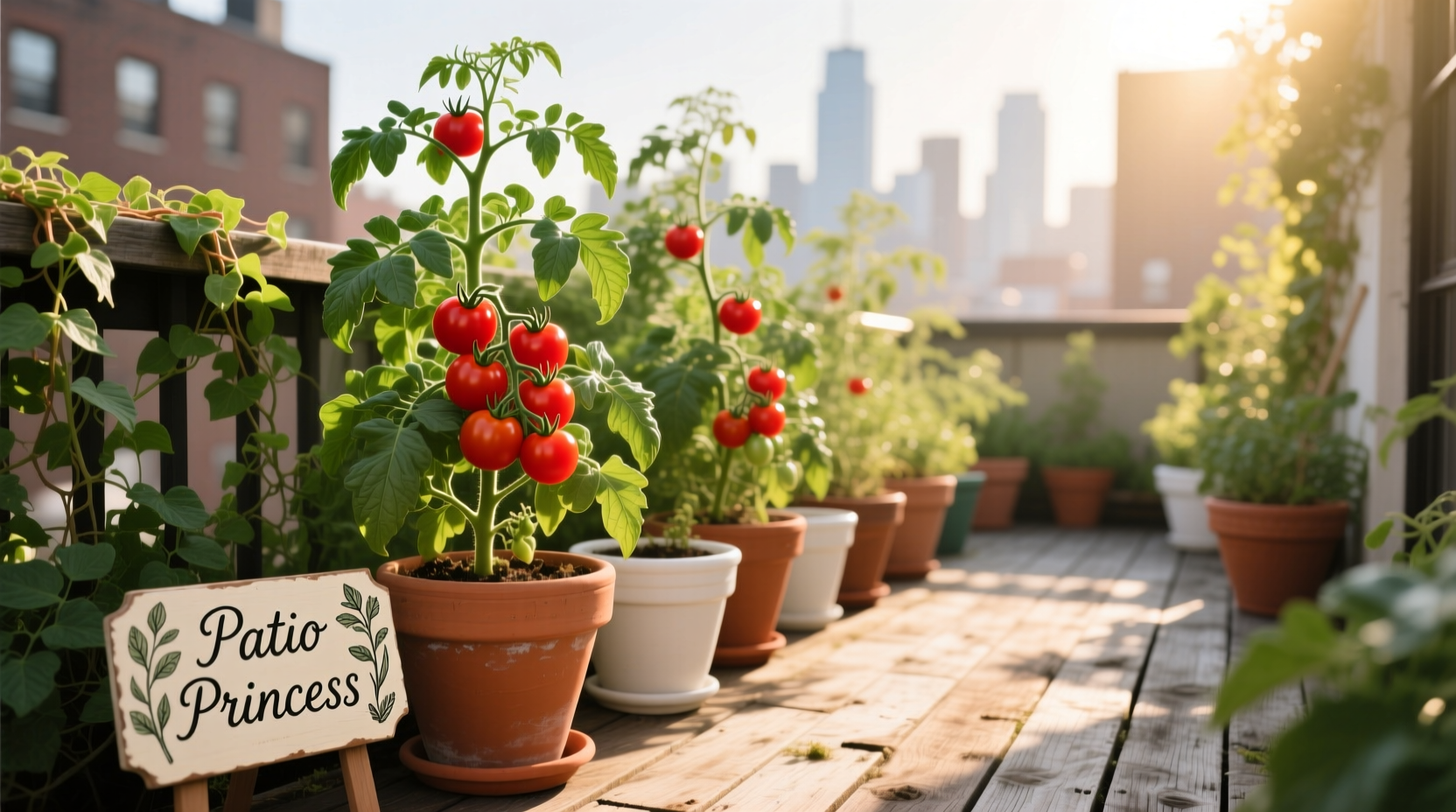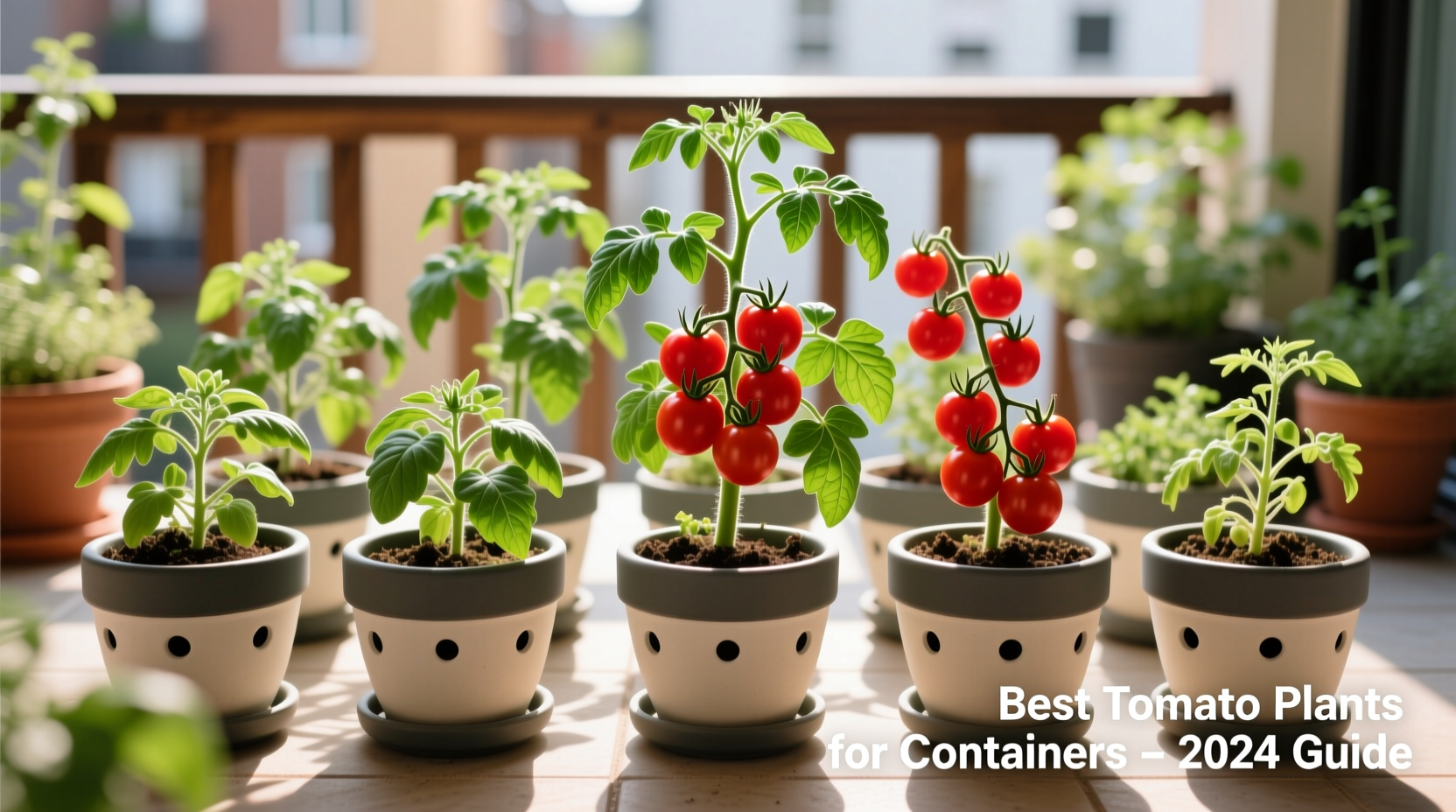Container gardening opens up tomato growing possibilities for apartment dwellers, urban gardeners, and anyone with limited outdoor space. But not all tomato varieties thrive in pots—many require more root space than containers provide. After analyzing dozens of varieties across multiple growing seasons, we've identified the top performers that deliver abundant harvests without sprawling vines taking over your patio.
Why Most Tomatoes Fail in Containers (And How to Avoid It)
Tomato plants naturally develop extensive root systems that spread 18-24 inches deep and wide. When confined to containers, standard varieties quickly become root-bound, leading to stunted growth, blossom end rot, and disappointing yields. The key to success lies in selecting varieties specifically bred for container adaptation.
According to research from the University of Minnesota Extension, container-grown tomatoes require three critical elements:
- Appropriate variety selection (determinate or dwarf types)
- Minimum 5-gallon container size for full production
- Daily monitoring of moisture levels
| Container Size | Max Plant Height | Expected Yield | Best For |
|---|---|---|---|
| 3-5 gallons | 18-24 inches | 5-10 lbs/season | Cherry tomatoes, dwarf varieties |
| 7-10 gallons | 3-4 feet | 15-25 lbs/season | Full-sized determinate tomatoes |
| 15+ gallons | 5-6 feet | 25-40 lbs/season | Indeterminate varieties (with support) |
Top 7 Container Tomato Varieties That Actually Deliver
1. Patio Princess
This All-America Selections winner produces full-sized (6-8 oz) tomatoes on compact 24-inch plants. Unlike many container varieties that sacrifice fruit size, Patio Princess delivers garden-quality flavor in a space-efficient package. It matures in 65 days and continues producing until frost.
2. Tiny Tim
At just 12-18 inches tall, this heirloom variety is perfect for small patios or windowsills. The 1-2 inch cherry tomatoes grow in clusters and ripen in 45-55 days. While yields are modest (3-5 lbs per plant), the exceptional sweet-tart flavor makes it worth the space.
3. Bush Early Girl
For gardeners wanting early harvests, this compact determinate variety produces 6-8 oz tomatoes in just 50 days. Plants reach 3-4 feet tall but stay contained with proper pruning. The University of California Cooperative Extension recommends this variety for coastal climates where longer-season tomatoes struggle.
4. Balcony
Bred specifically for container growing, Balcony produces abundant 2-3 inch tomatoes on plants that stay under 24 inches tall. This indeterminate variety keeps producing throughout the season, making it ideal for continuous harvests on patios. Requires a small cage for support.
5. Tumbling Tom
Perfect for hanging baskets or elevated planters, this trailing variety sends vines cascading over container edges. The 1-inch cherry tomatoes grow in profusion and are ready in 60 days. Particularly effective in hot climates where ground heat would stress traditional plants.
6. Micro Tom
The smallest commercial variety available, Micro Tom reaches just 6-8 inches in height. Developed by horticultural researchers at the University of New Hampshire, this variety produces 1-inch tomatoes in 65 days and can thrive in containers as small as 2 gallons. Ideal for educational purposes or extremely limited spaces.
7. Celebrity Hybrid
A reliable performer across most climates, Celebrity produces 7-8 oz disease-resistant tomatoes on 3-4 foot plants. While technically a semi-determinate variety, it adapts well to container life with proper pruning. Particularly recommended for beginners due to its resilience against common tomato diseases.
Container Requirements: Size Matters More Than You Think
Many gardeners make the critical mistake of using containers that are too small. Research from University of Wisconsin Horticulture shows that tomato plants in undersized containers produce up to 60% less fruit than those in properly sized containers.
For best results:
- Use containers with minimum 5-gallon capacity for full-sized tomatoes
- Ensure at least 12 inches of soil depth for proper root development
- Choose containers with multiple drainage holes (at least 4-6)
- Dark-colored containers require more frequent watering in hot climates

Planting and Care Guide for Maximum Harvests
Soil Mix Requirements
Never use garden soil in containers—it compacts and restricts root growth. Instead, create a lightweight mix:
- 60% high-quality potting mix
- 30% compost
- 10% perlite or vermiculite for drainage
Adding a slow-release organic fertilizer at planting time provides essential nutrients throughout the season.
Watering Strategy
Container tomatoes require daily watering during hot weather. The key is consistency—fluctuating moisture levels cause blossom end rot. Check soil moisture daily by inserting your finger 2 inches deep. Water when the top inch feels dry, saturating until water runs from drainage holes.
Fertilizing Schedule
Container plants need more frequent feeding than garden-grown tomatoes:
- At planting: Mix in slow-release fertilizer
- Every 2 weeks after first flowers appear: Liquid tomato fertilizer
- Every 4 weeks: Epsom salt solution (1 tbsp per gallon) for magnesium
Troubleshooting Common Container Tomato Problems
Blossom End Rot
This calcium deficiency appears as black, sunken spots on fruit bottoms. Prevent it by maintaining consistent soil moisture and adding calcium at planting time. University studies show that container-grown tomatoes need 20% more calcium than garden plants due to faster nutrient leaching.
Yellowing Leaves
Often indicates nitrogen deficiency in containers. Apply a balanced liquid fertilizer and check pH—tomatoes prefer slightly acidic soil (6.2-6.8). Container soil pH changes more rapidly than garden soil, requiring monthly monitoring.
Pest Management
Container plants face fewer pest issues than garden plants, but watch for:
- Aphids: Spray with insecticidal soap
- Whiteflies: Yellow sticky traps work effectively
- Hornworms: Hand-pick in early morning











 浙公网安备
33010002000092号
浙公网安备
33010002000092号 浙B2-20120091-4
浙B2-20120091-4